https://www.youtube.com/watch?v=MsorXoRrV0c
How to Cook Smoked Brisket _ Traeger Staples
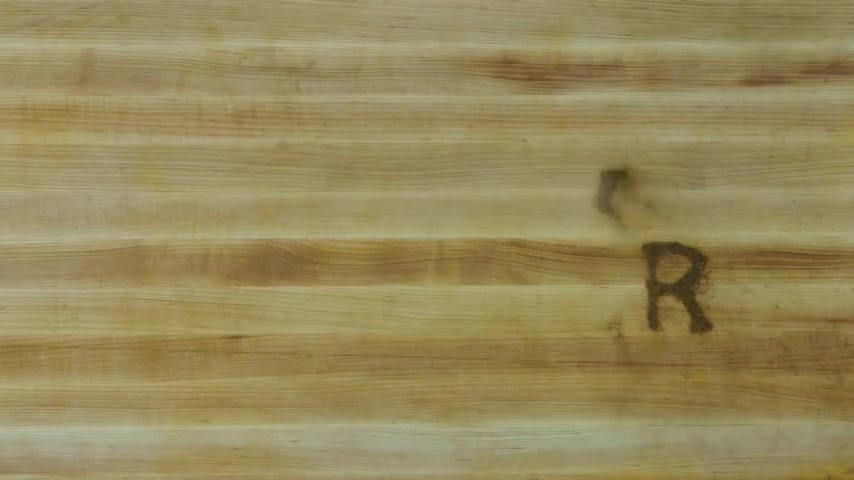
Hey guys , I'm Matt Pittman of Meat Church .
I'm here today to show you how to make a brisket on your trigger .
So I'm very central Texas inspired .
And so that's really the method that I'm gonna show you guys today .
What we're starting out with here is a , is a full packer brisket .
A brisket is comprised of two muscles .
You've got the flat and you've got the point .
So basically they overlap each other like this , not right on top of each other , but a little bit offset .
So the first thing we wanna do is we want to trim this brisket , we're probably gonna take about £2 out of it .
And so when you look at a brisket , look on the meat side here , there's some really hard fat right here at the top .
We want to go ahead and take that off to start .
No hard fat is gonna render in your cook .
So I'm going to eliminate that .
At first , there's a lot of personal preference in a brisket .
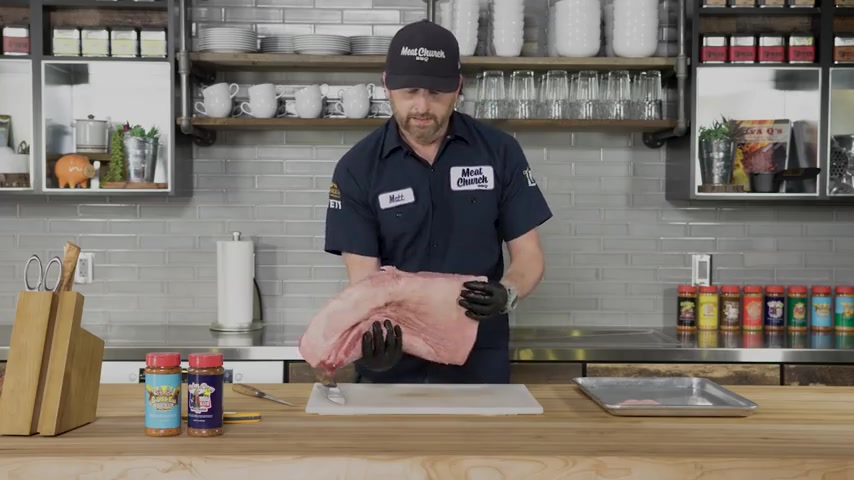
But what I'm gonna do is I'm going to just kind of effectively shave this out , but I'm just making a nice cut , not digging deep into the meat just to kind of remove this fat portion here .
The next thing I wanna do is I this this old kind of gray meat on the side .
I want to get rid of that .
So I'm gonna do probably about a quarter inch just around the edge just to trim this up to get rid of all that .
Ok .
So that's nice and cleaned up on the side .
So now let's look at the top so you can decide how much of this other fat you want to take off here , this soft fat will render .
So , you know , for cooking in your backyard , you don't necessarily have to remove it any of the stuff that's really loose .
I'll pick up and kind of filet it away , but where it's a little thicker here , I'll go ahead and uh I'll go ahead and take that off .
So , on the fat side , if you look at this entire brisket , what you'll see is it looks like there's fat in covering the entire side back here .
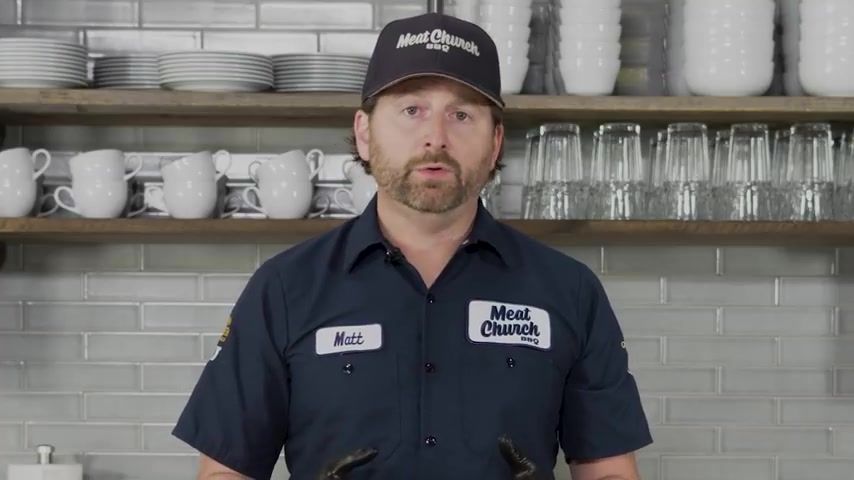
And so what you like to do is kind of take that down to about a quarter of an inch , maybe a half inch at the absolute most it's personal preference .
So effectively , you want to shave that off .
I think that's pretty good for uh for my standards and then one more piece .
So this side here is just a little bit thick .
So in between the flat and the point there's quite a bit of fat in here .
Um , I want to take that out so that I can season it .
So I'm gonna take my sharp knife again and I'm basically gonna just cut kind of one big section of this off , kind of cut it out , just a hair and then I'm gonna take the whole thing off because there's just so much fat .
Ok .
So this is looking really nice and trimmed and now it's time to season it .
So there's a lot of ways you can season your brisket .
Central Texas barbecue is coarse , cracked pepper and big kosher salt , 50 50 mixture .
A lot of guys add a little bit more to it .
So that's why I like to bring them holy cow rub , which is heavy salt and pepper and a little bit of garlic touch of paprika .
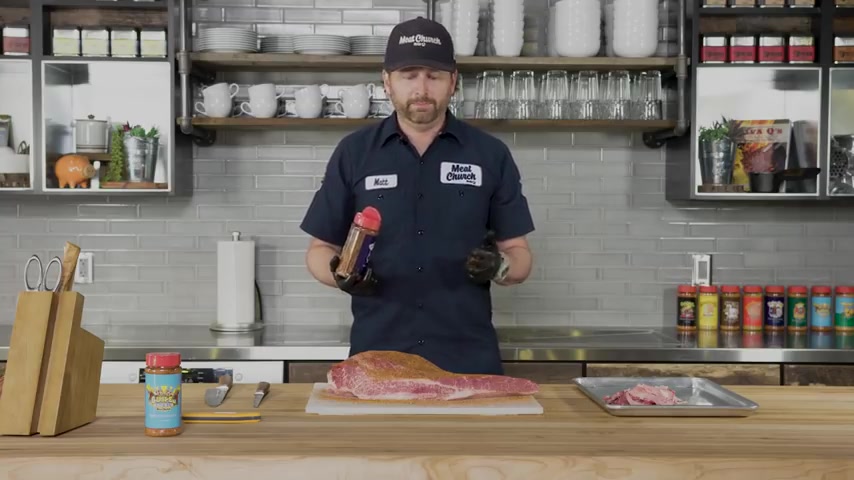
And so I'm primarily going to season just with this rub and I'm going to start on the meat side and I like to season pretty high .
So if you're seasoning up high , then you're going to get a nice even application .
Now , I don't use any binders on my protein before I apply seasoning .
So what's a binder ?
A binder could be in olive oil .
Some people use things like mustard shar sauce .
I can apply the seasoning and just kind of pat it a couple of times and I'll be good to go .
So in my mind , no real need to do anything else .
Um I also want to make sure I get the sides .
OK .
So that's a pretty , pretty healthy application .
What I like to do is is uh is layer a little bit .
So I'm gonna bring in my Holy Gospel rub which , which is a rub that is primarily holy cow , but has a little bit of our gospel all purpose added .
And so I'm gonna go light with this .
So I went pretty average with the first one .
This was just gonna be a nice coating across the top .
Not too much .
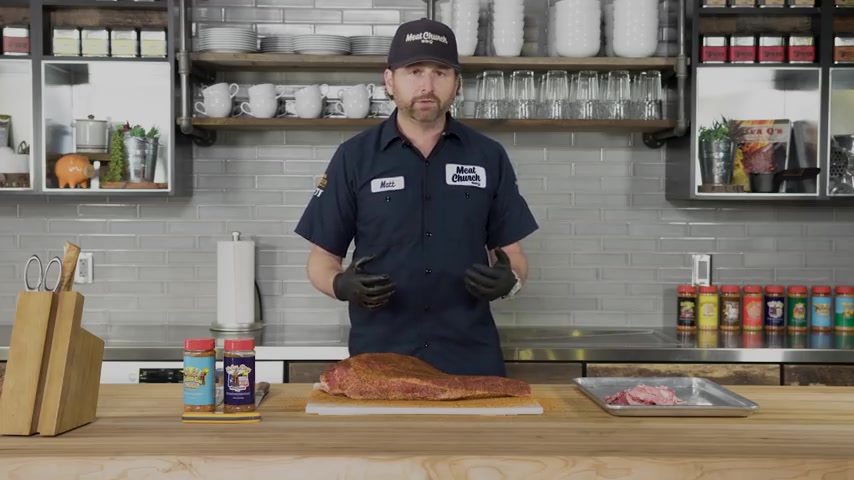
And I'm going to pack that in .
So ideally , we would let this sit 2030 minutes max and we're gonna flip it over and repeat the process .
Ok ?
So this brisket sweat out for about 30 minutes .
So if you look at it , it's nice and kind of appears wet on the top .
And like I said , that's where the seasoning has pulled some kind of moisture out .
Basically , that means this rub has completely adhered to the brisket and we're ready to cook it .
But let's talk about cooking this .
We're gonna cook it 2 75 fat up and it's basically gonna be a two part cook .
We're gonna cook this thing probably about six hours or so unwrapped in the grill and then we're gonna wrap it and we're gonna finish the cook .
So , and we're gonna talk about this as we cook it .
But what you're gonna be looking for is an internal temperature and that's gonna be your cue to wrap it .
That bark is gonna start to form .
It's gonna look really pretty .
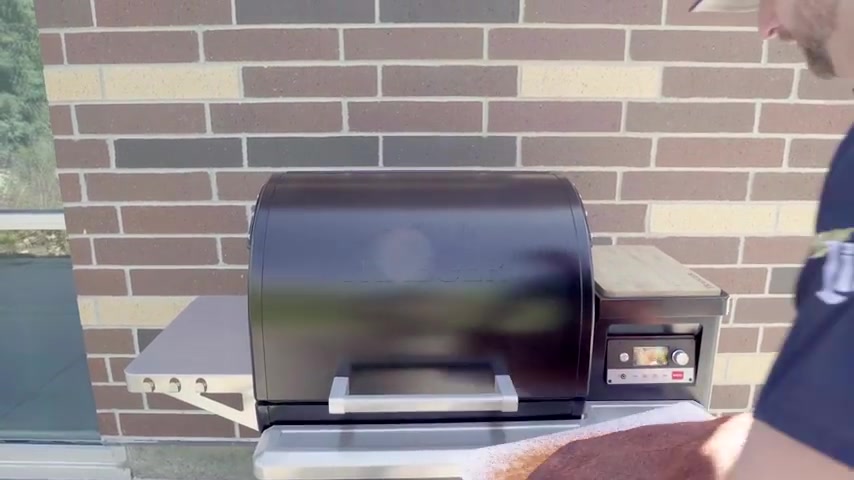
And so what you're gonna do is you're gonna take your instant re thermometer and you're going to check right in the middle of the flat , you're gonna poke in and check and , and what I want you to do is wrap it around 165 degrees internal temperature .
So let's take this thing outside .
All right .
So here we are at the trigger .
We've got it set at 275 degrees and like I said , I like to cook fat up .
So I'm gonna place this baby on this way .
All right .
So we've been rocking at 275 degrees .
Let's take a look .
And so what you see here is this beautiful mahogany color .
I'm gonna go ahead and test it with my instant re thermometer right in the middle of the flat .
So we're in the 160 degree range , 160 .
I get the 165 .
So I'm ready to pull this thing off and wrap it .
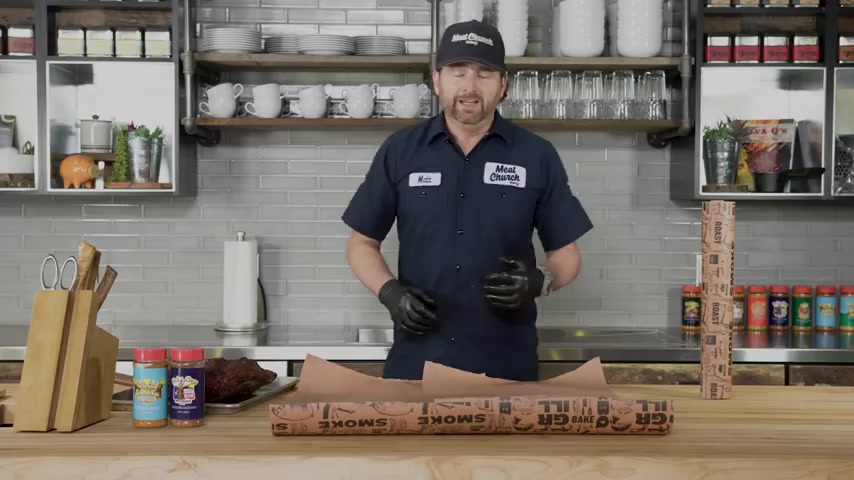
All right , we're coming back inside off the trigger .
It's time to wrap this brisket .
There's several ways you can wrap your brisket .
If this is your first brisket , I'd recommend wrapping in heavy duty aluminum foil .
I'd pull out two arm length pieces on top of each other .
Put the brisket on top , wrap it up , nice and tight .
Go back in the trigger .
That's the most forgiving way to cook .
I'm gonna go the Texas route , which is to wrap in un waxed pink butcher paper .
So the pro of this is all that great bark you created .
It's permeable through this paper .
So you won't actually lose that bark .
There's a little bit of a learning curve with butcher paper .
So , like I said , I'd start with foil first .
Gonna take the brisket here , this beautiful mahogany brisket and I'm gonna put it right in the middle .
I've got two pieces of paper just kind of overlap .
So think swaddling a baby basically , however you wanna do it .
And for me , I'm gonna go back in fat side up .
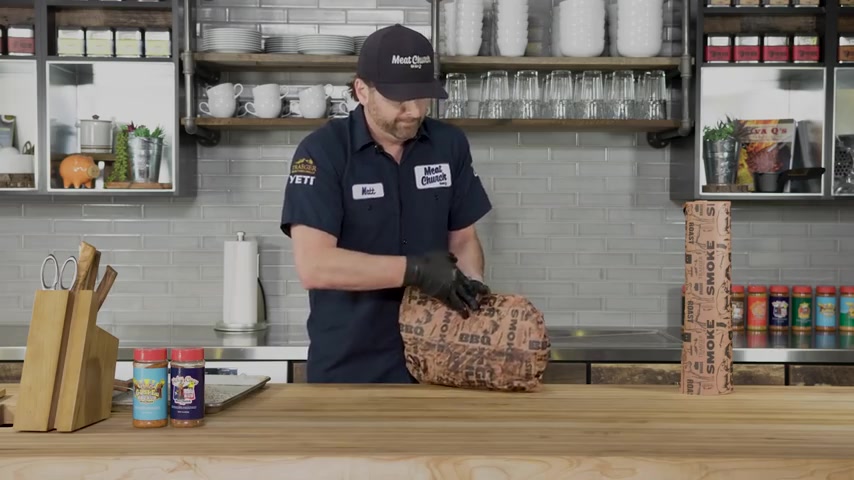
Um And you know , from here when we go back out on the trigger , what we're looking for , it's just to get it again , probe tender right here in the middle of the flat .
So it's probably around two oh 2 , 203 degrees .
And it's gonna be OK to check it throughout the cook right through this paper .
You don't have to unwrap it or anything like that .
Just check right here and you're gonna be good to go .
So let's go put this back on the trigger , staying at 2 75 taking it home .
All right .
Got this baby wrapped fat up right back in the trigger .
275 degrees .
Not gonna touch it , gonna come back in here and check it in about an hour and a half right here .
And when I get in the one nineties , I'm gonna check it about every 10 , 15 minutes or so until we get to where a probe tender and we're done .
All right .
So we're going to probe this brisket and like I said , we want to check it in the flat .
You can see where I've checked it a couple of times .
I'm OK , going back in the same hole and it feels really tender right now .
So I'm feeling good about this .
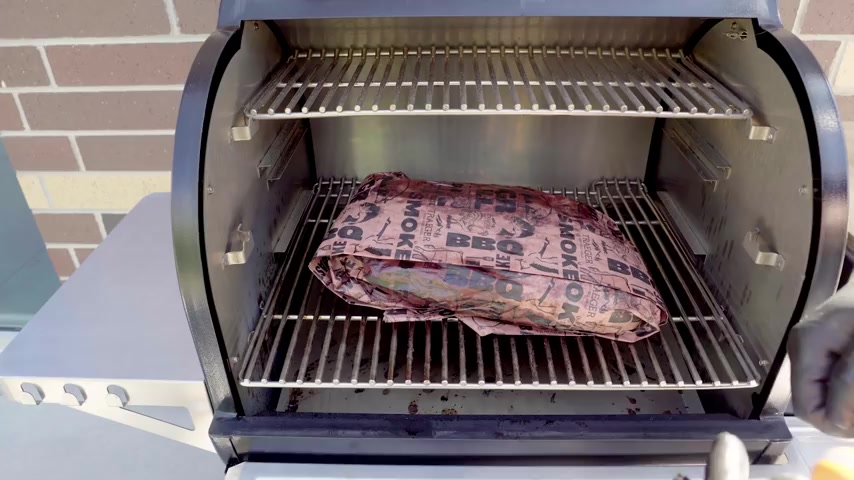
It's time really to pull this thing off and we want to let it rest super important to let your brisket rest for at least an hour .
You've been hitting this brisket with high heat for 10 hours or so .
And all the moisture in this brisket is kind of out of the end of the muscle fibers .
And you want to let that thing relax so that moisture redistributes throughout the entire brisket .
You don't want to slice this thing hot this thing .
If you slice it and it's steaming out , that's just robbing yourself of a really juicy bite .
You could have so important to rest at an hour , but you could rest this thing after three or four hours and it would be fantastic .
Just put it in the cooler and lock it down .
So we're done .
Ok .
So we brought the brisket in wrapped , left it wrapped , put it in a cooler and it sat there for just over an hour .
Now we've pulled it out and it's time to slice this and I want to show you this thing fat up .
I told you how this was going to render .
Look how soft this is .
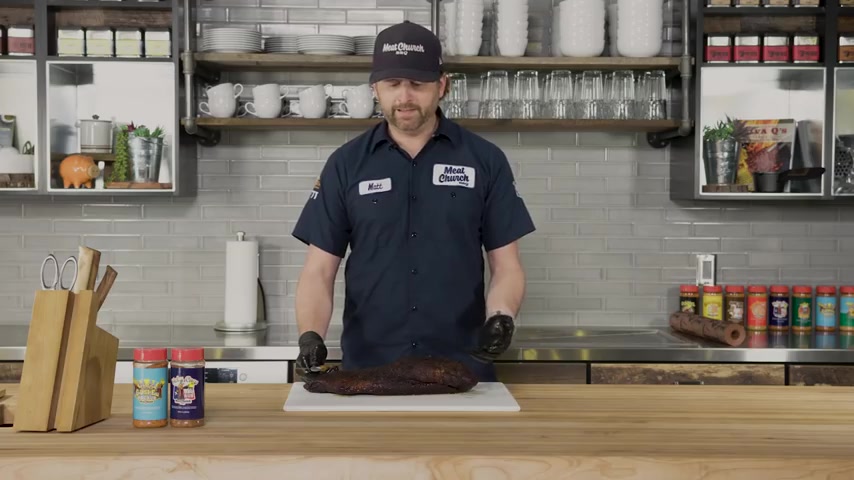
This is going to be an amazing bite and it's just tender as can I can tell just from the touch .
So I wanna talk to you a little bit about slicing .
Common mistake .
I see people make is they take their knife and they just start slicing straight down this brisket .
So the first thing that we'll do when the whole brisket comes out is basically cut it in one third .
So we'll go about one third of the brisket down and we just make a nice , pretty cut here .
You can see on the flat that it's a little more lean .
You can see all the fat here and the point I don't like it when people squeeze their brisket , but just to show you what you can achieve on the trigger , I'm gonna squeeze it for you anyway , just a little bit .
Don't wanna squeeze that too much .
That's again , you're gonna rob yourself with a super juicy bite , squeezing that , but sure it's sexy to look at .
So there you go .
So now we're going to slice this two different directions here on the uh on the leaner side or on the flat , we can go ahead and just slice , slice right down the brisket .
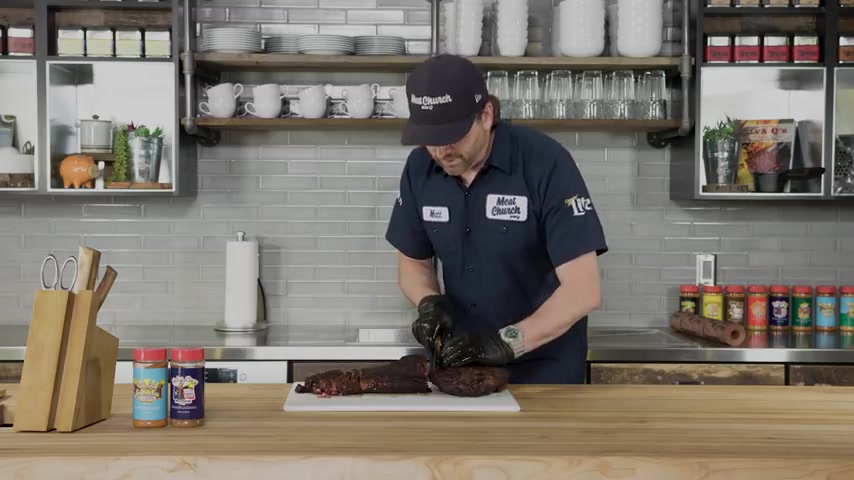
So I'm just gonna slice a few slices here this direction .
And for those of you that like the fat of your stuff , which this is my favorite part of the brisket , you're actually going to spin this because the grain goes a different direction .
So , and I'm gonna , I'm gonna slice mine actually thicker .
So I'm going almost even half inch on this end , opposite direction on the slices .
And I wanna show you look at that gorgeous smoke ring that we got off the trigger .
So oak pellets help with the heavy smoke .
The holy cow , rub the Holy Gospel .
Just give you that gorgeous smoke ring we've got right there .
So here's kind of the difference .
So you can choose if you like the lean or if you like the fatty , pull this apart .
Talk to you about that perfect fat there .
Not too much fat is flavor when used in moderation and that is a perfect amount to me and I can't wait any longer .
So , and you're mad about it that my friends is a Texas brisket .
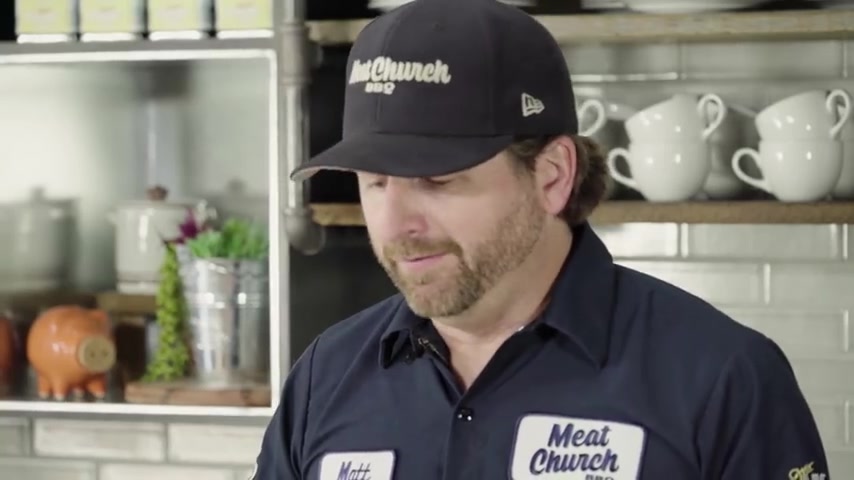
So I hope you guys enjoy for this recipe and others hit trigger grills dot com slash recipes or download the app .
Are you looking for a way to reach a wider audience and get more views on your videos?
Our innovative video to text transcribing service can help you do just that.
We provide accurate transcriptions of your videos along with visual content that will help you attract new viewers and keep them engaged. Plus, our data analytics and ad campaign tools can help you monetize your content and maximize your revenue.
Let's partner up and take your video content to the next level!
Contact us today to learn more.